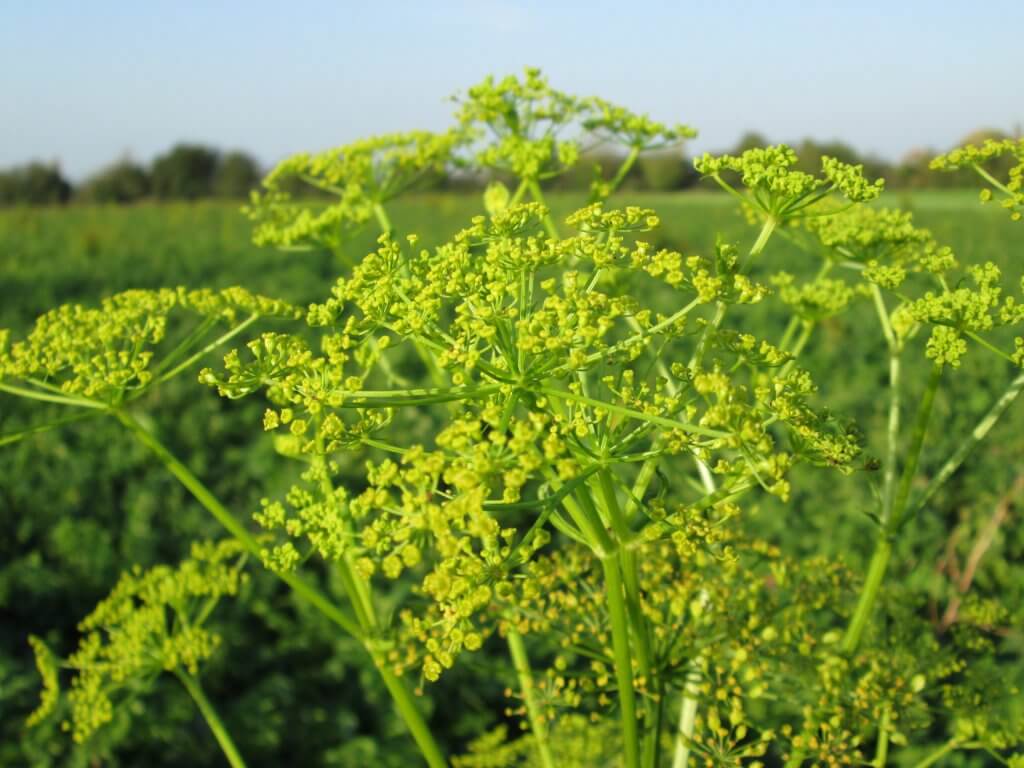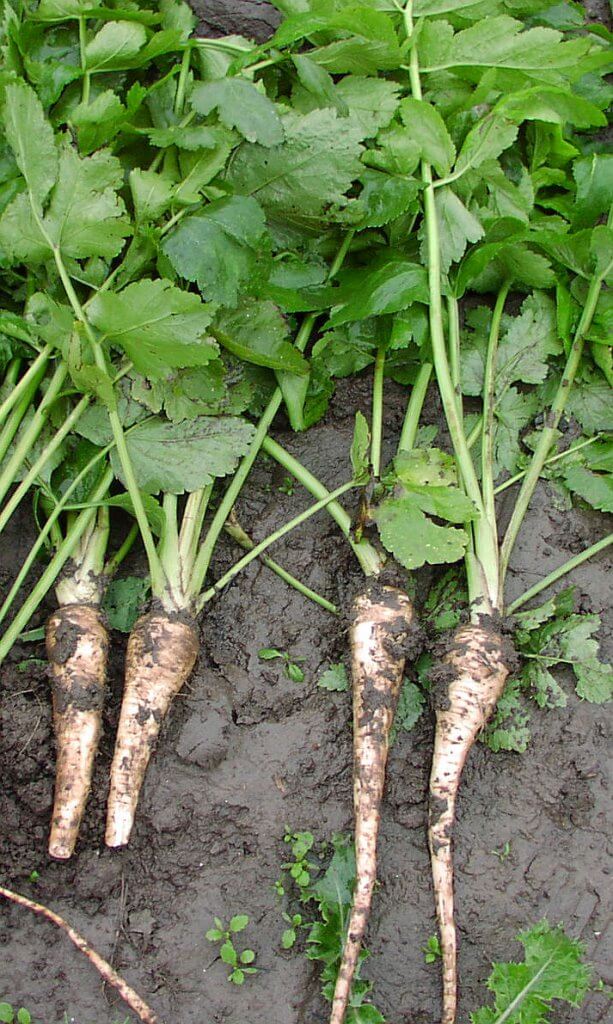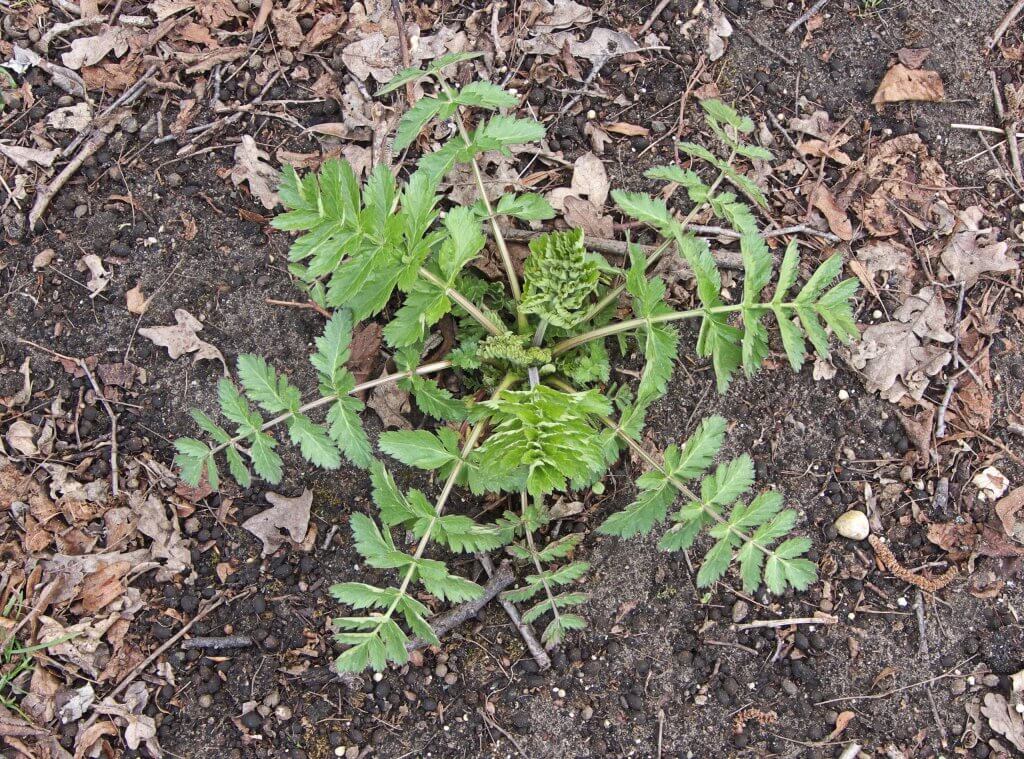Wild parsnip (Pastinaca sativa), is a fairly well known biennial garden vegetable and a member of the carrot and parsley family ‘Apiaceae’. Both the wild and garden varieties share the same taxon, meaning they are able to cross pollinate.
It was once a native of Europe and Asia, but spread throughout many parts of the world through trading and colonisation. You can find it in an array of areas, from your own yard to field edges, along walking tracks and areas of recently disturbed soil. Essentially any banks or edges where it has space to grow quickly without competing with taller plants. They are especially prolific in the north eastern and now midwestern states, where they were first introduced.

Grown for its sweet tasting taproot, it is usually harvested within its first year of growth before flowering occurs. As a once popular garden vegetable with European settlers, parsnip soon spread into the wild and can be found frequently in most states. Many areas even consider it an invasive weed species because of its ability to spread quickly via seed.
The taproot is cream in color, with a wide top that quickly becomes narrow at the pointed end. It can also become forked in stony soil. When flowering, you’ll spot the recognisable umbels of flowers that are usually produced on members of the carrot family. Instead of white or cream colored flowers like cow parsnip or wild carrot, the wild parsnip flowers are bright yellow. These flowering stems are produced in its second year of growth, and can reach up to 4ft tall in some plants.

Edible parts and other uses
Only the taproot is edible, as the leaves and stems contain a toxic and bitter sap. The root can be boiled, roasted, grilled or fried for a delicious sweet and earthy taste. It pairs well with honey, mustard and herbs such as thyme or rosemary.
Evidence has emerged that even the Romans once cultivated and grew parsnips. Whilst in Europe, before sugar cane became locally available, local people used parsnip root as a sweetener.
Cautions
The sap that the leaves and stems emit can cause severe irritation and skin reactions in some individuals. Like wild carrot and cow parsnip, it can also cause dermatitis on the skin after exposure to the sap and then sunlight. It is always best to wear gloves when you are handling or harvesting wild parsnip.
Care must be taken to avoid foraging any toxic lookalikes. A number of other species within the Apiaceae family are extremely toxic, such as the water hemlocks. So before picking wild parsnip you must be 100% certain when identifying.
Foraging
Begin your search along field edges or pathways whilst out on a walk around your local area. You may come across wild parsnip in urban areas, such as parks or waste ground. But it is safer to avoid these plants as they could be contaminated with urban pollution.
In its first year of growth, wild parsnip produces a low rosette of pinnate leaves with a lightly serrated edge. This is the best time for harvesting. However it can be difficult to identify without the presence of flowers or a good field guide.
It can help to identify a patch of wild parsnip when in flower in summer, then return to the same patch in early spring to spot the new young plants. Taking care again to consult a local guide or identification book.

Did you know…
Parsnips and other root vegetables tend to be sweeter before flowering. This is because the sugars are currently being stored in the root, before energy is sent up the stems to promote new growth. Although this does raise difficulties when trying to identify the plant without flowers, so care must be taken.
Conclusion
Nutritious and delicious, wild parsnip is a great wild edible to increase your depth of knowledge and confidence in wild foraging. Its toxic lookalikes will ensure thorough identification and the ensuing pride of being able to easily identify wild plants is rewarding.
—————Written by Hannah Sweet
Hannah is a freelance writer and graphic designer from the UK. With a penchant for travelling, photography and all things botanical, she enjoys writing about a wealth of topics and issues, from conservation and slow living, to design and travel. Learn more about her writing and design services at www.sweetmeanders.co
Many of our readers find that subscribing to Eat The Planet is the best way to make sure they don't miss any of our valuable information about wild edibles.
See our privacy policy for more information about ads on this site






